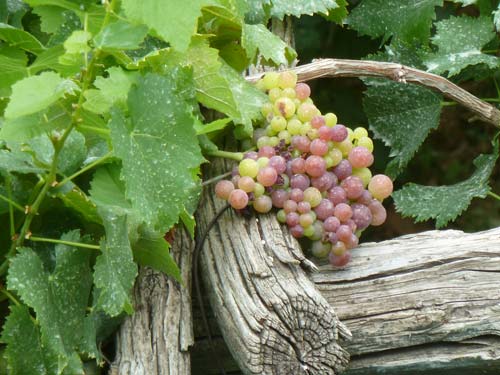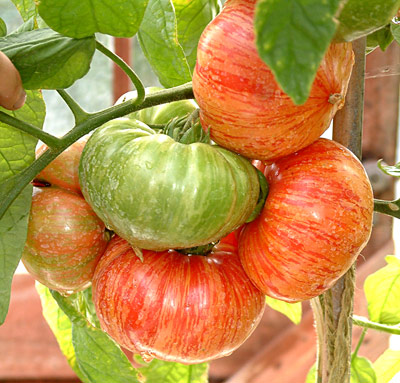Zante or Baltic vimba. A fish. Could you send details (and a picture) to queries@whatamieating.com if you know more?
Vinegar is an ancient condiment and it is not difficult to imagine why. Ever since wine has been made, particularly before storage methods were good and the seals of clay on many bottles broke, vinegar has been in ready supply. Vinegars are made from wines and other drinks which turn sour on exposure to the air. The word itself comes from the French for sour wine, vin aigre. Malt vinegar derives from the barley beer process and the Chinese and Japanese make it from soured rice wine. It is used as an acidulant, as a preservative and as an additive in many sauces and dressings.

Vine leaves are often used for wrapping other foods, as in dolma in Greece where cooked rice and other ingredients are wrapped in vine leaves.
Bitter apple. Colocynth. A type of gourd about the size of an orange. It has bitter, spongy flesh and is used as a laxative. It is drought resistant so grows well in sandy places.
Basella. One of the amaranths, basella is otherwise known as Ceylon spinach or vine spinach. This is a tropical climbing plant which can grow up to 2 meters (6 ft) in height, the succulent red of green leaves of which are harvested as the plant grows and cooked in the same way as spinach.
A small, grey variety of snail - the Roman or vineyard snail. It is rather slow-growing, but thought to the tastiest of the snails though without quite the special qualites of the petit gris. Helix pomatia measure between 28 and 36 mm (around 1"-1½") while Helix aspersa are between 25-30 mm. The latter are the only snails which may be imported to Australia for purposes of farming for the table.

A beautiful striated beefsteak tomato variety, with orange and pinkish-red stripes.